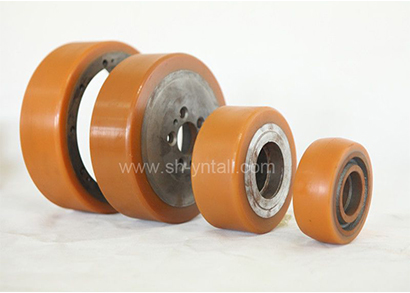The Difference Between Polyurethane Casters and Nylon Casters
More and more industrial equipment and household products have a close relationship with polyurethane casters. At the same time, with the development needs of various industries, the application of industrial PU wheels will become more and more extensive.
For polyurethane casters equipped with brakes, check whether the brakes are working properly, and check the brakes once a day or before each use. For equipment equipped with multiple brake casters, you can try to push the device by locking only one brake caster at a time to check whether the braking performance of each caster is good. If the brakes of the casters fail due to wear or damage of the wheels, please replace the wheels immediately and retest the brake system. If the mechanism of the brake system of the caster itself is damaged, repair or replace the brake. Every time you replace the brakes, you need to retest the braking performance of the casters.
Nylon casters are an important branch product of abrasives, and they are abrasive products following strong cutting abrasive products such as belt wheels. The nylon wheel products are mainly composed of nylon fiber mesh, grinding media (ore), bonding resin, and other main components, which may add various additives such as heat absorption additives, fillers, and pigments. The English name of nylon is Polyamide, which is the general name for polymers containing amide groups in the repeating units of the macromolecular backbone. Polyamide can be obtained by ring-opening polymerization of internal acid amine or can be obtained by polycondensation of diamine and diacid.
Polyurethane is made by polymerization of isocyanate (monomer) and hydroxyl compound. Because it contains strong urethane groups, it is insoluble in insoluble groups and has good oil resistance, toughness, abrasion resistance, aging resistance, and adhesion. Different raw materials can be used to produce materials suitable for a wide temperature range (-50~150℃), including elastomers, thermoplastic resins, and thermosetting resins. It is not resistant to hydrolysis at high temperatures, nor is it resistant to alkaline media.

Pu Castor Wheels
Therefore, in general, nylon casters have higher hardness and are more wear-resistant. It is better in terms of weight-bearing. Polyurethane casters are softer, and their strength is lower than that of nylon casters, but the noise reduction effect is much better and the overall capacity is higher.
PU Castor Wheels elastomer is a high polymer material composed of many flexible and rigid segments. With the increase of the proportion of rigid segments and the increase of the density of sexual groups, the original strength and hardness of the elastomer will be corresponding The metal mouth ring and protection ring of its flow-through parts have been washed by a large amount of sediment, and it will be severely worn and leaked within a few hundred hours, while the mouth ring and protection ring coated with polyurethane elastomer will continue to run for 1800 hours without wear. Others such as the rubber rollers of the rice hulling machine, the vibrating screen for coal preparation, the race track of the sports field, the dynamic oil seal ring for the crane forklift, the elevator wheel, and the roller skate wheel, etc. are also polyurethane elastomers. Where it comes in.
One point that needs to be mentioned here is that to increase the friction coefficient of low- and medium-hardness polyurethane elastomer parts and improve the wear resistance under load, a small amount of aluminum disulfide, graphite, or silicone oil can be added to this type of polyurethane elastomer. Lubricant. It is easy to burn, with a faint plastic smell, the surface melts evenly when burned, and it has a sticky filament shape.
Nylon is not easy to burn, it has the smell of scorching hair when burned, and the surface after burning is blistering and sticky filaments. The burning condition of high-temperature nylon PA is the same as that of PA material, but there is white powder on the surface after burning. Polyurethane is easy to burn, there is a faint white smoke when burning, it is easy to melt, has no irritating smell, and has a sticky silk shape. Polyvinyl chloride is easy to burn, has thicker black smoke when burned, has a pungent odor, is non-sticky, and the surface after burning is black carbon powder.
评论
发表评论